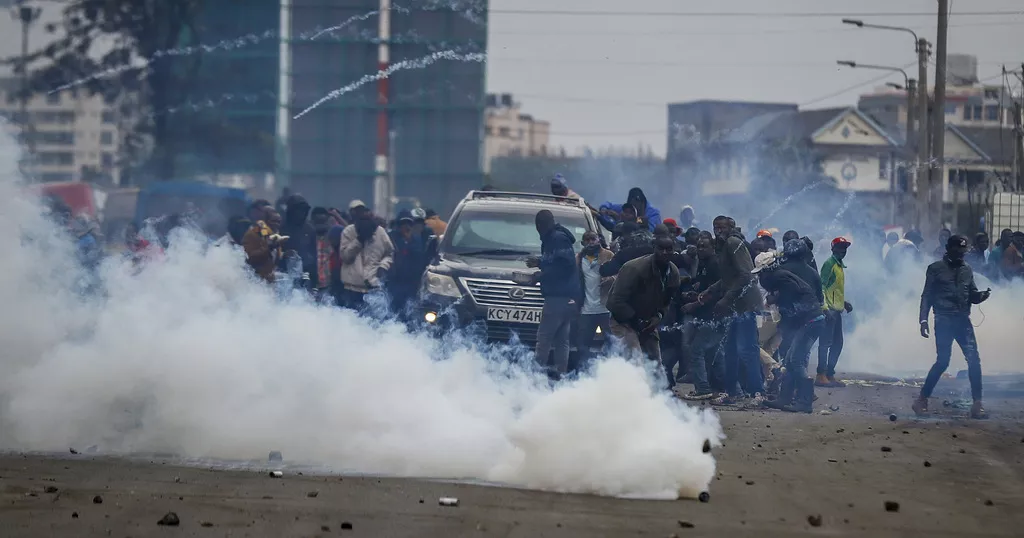Kenyan police fired teargas to disperse demonstrators in Nairobi on Thursday, as public outrage grows over the death of blogger Albert Ojwang, who died under controversial circumstances while in police custody. The protest, which began near the Parliament building during the national budget presentation, turned tense as demonstrators clashed with riot police. At least two vehicles were set ablaze, and the police used force to prevent the crowd from advancing toward key government buildings.
Ojwang, a 31-year-old blogger from Homa Bay in western Kenya, had been arrested on June 6 for allegedly publishing false information about Deputy Police Chief Eliud Lagat. He was transferred over 400 kilometers to the Central Police Station in Nairobi. Authorities initially claimed that Ojwang died after he “hit his head against the wall” in his cell. However, that version was widely disputed by activists and civil society organizations, especially after images and post-mortem results revealed signs of head trauma and neck injuries consistent with physical assault.
Mounting pressure from the public and rights organizations eventually forced a shift in the official narrative. President William Ruto, addressing the nation on Wednesday, admitted that Ojwang “died at the hands of the police.” He called the incident “heartbreaking and unacceptable,” and promised that the matter would be thoroughly investigated. His comments came after widespread criticism of the police’s handling of the case and the initial attempt to downplay the incident.
The Independent Policing Oversight Authority (IPOA) has launched an investigation into Ojwang’s death. IPOA Chairperson Isaac Hassan declared that every officer involved in the blogger’s arrest, transfer, detention, and subsequent death would be treated as a suspect. He emphasized that there would be no cover-up and that the case would not be used to shield officers from accountability. Hassan’s statement came in the wake of growing skepticism from the public, many of whom believe that justice for police abuse victims in Kenya is often delayed or denied.
Thursday’s protest was the second in a week following an earlier demonstration on June 9, where police also used teargas to stop activists from marching to the Central Police Station. The protests are reminiscent of last year’s anti-government demonstrations, during which nearly 20 people were killed and hundreds injured. Those events drew criticism of excessive force and sparked widespread calls for police reform.
Ojwang’s death has intensified concerns over freedom of expression and the shrinking civic space in Kenya. He was among a growing number of digital activists and bloggers using online platforms to criticize government officials and public policy. His death, activists say, represents a dangerous precedent for the silencing of dissenting voices.
As the IPOA investigation continues, civil society organizations, human rights watchdogs, and members of the public have vowed to keep the pressure on authorities. Many are calling for the immediate suspension and prosecution of all officers implicated in Ojwang’s death. President Ruto’s government, which has already faced criticism for its handling of past protests, will likely face renewed scrutiny over its commitment to justice, transparency, and human rights.

